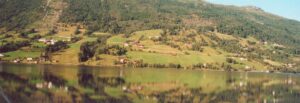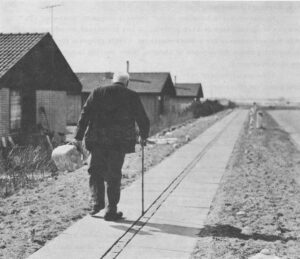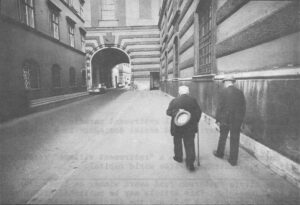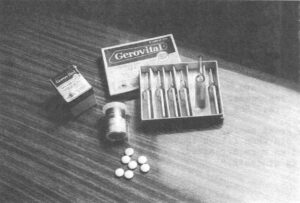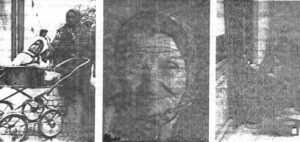Cruising the Norwegian coastline in September is a way of buying time, of getting my emotional and geographic bearings before reentering Shangri-la.
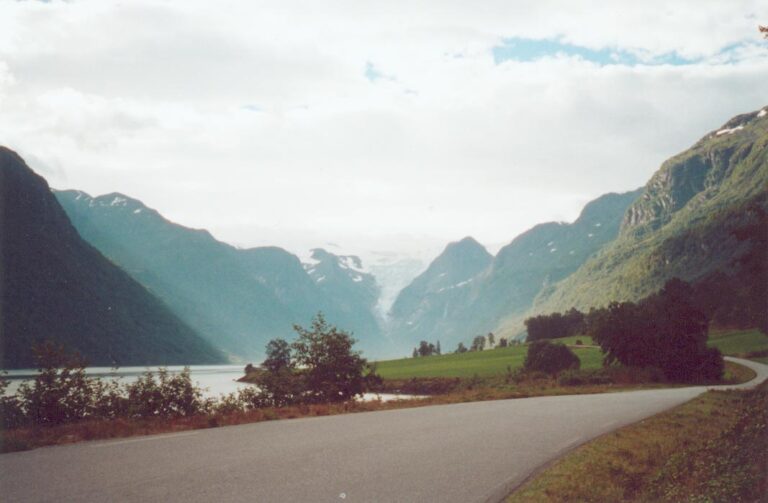
That’s how I remember Stryn, the pastoral idyll deep within the shrouded glacial mists of the Nordfjord, Norway, discovered via seaplane, no less, in April, 1971.
I was an Alicia Patterson Foundation fellow on aging around the world. (Later, Newsday columnist for “Life Over 60”) In Bergen, an intuitive editor suggested I visit his cousin in home town Stryn, offering transport in the Bergens Tidende aircraft next to the pilot and the newspaper’s Tuesday edition.
For two unforgettable weeks, Martin Lilleheim, and his wife, Malene, adopted me and my quest, opening doors unto a loving, balanced milieu. Fidelity to family, custom, and place bonded old and young. An athletic vitality defied chronological aging. Retirement was a foreign concept.
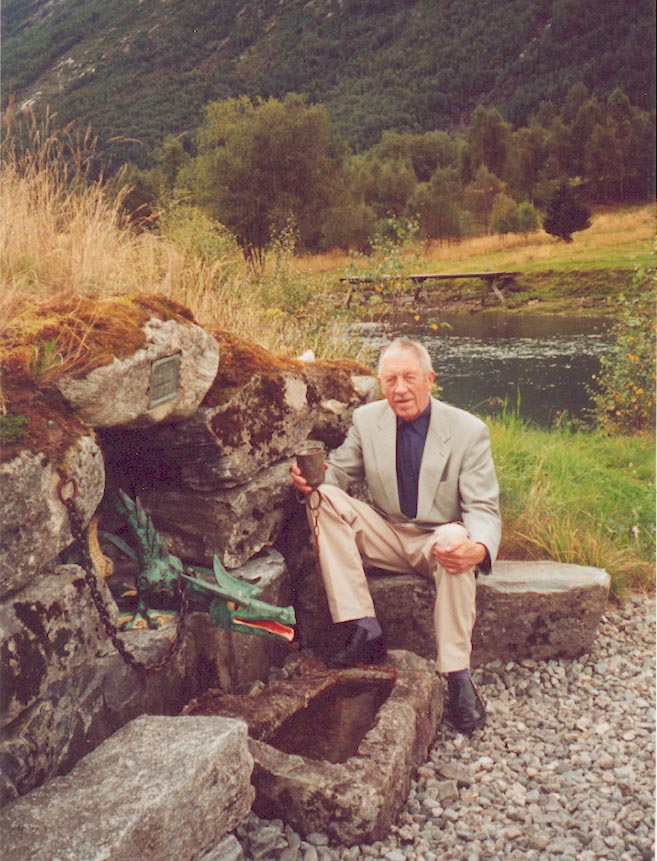
Planning a return, this time introducing my husband, Bill, intensifies concerns. As Bill teases about my “shrine,” I wonder if it was all fantasy or journalistic hubris.
We board the Hurtigruten’s sleek ship, the “Richard With,” at northern-most Kirkenes, charting a five-day, 1200-odd mile odyssey. First to the tip of the globe at North Cape—71° 10′ 21″—then southward through changing climatic zones and untamed seascapes. Cosseted by smooth sailing and an amazing variety of seafood, we experience turning on a dime in a barely wide enough fjord, and honest exchange with Norwegian shipmates.
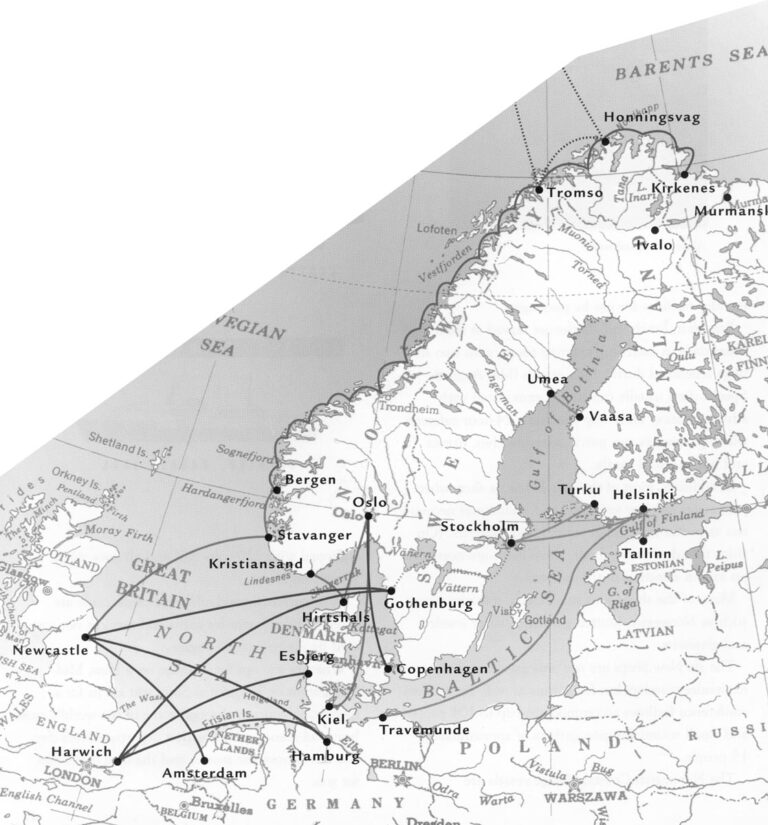
At various stops, new questions arise:
An older, costumed Sami couple (formerly called Lapps) summer-pasture reindeer in the wild, tree-less tundra of Finnmark province. Selling souvenirs, posing for photo-ops. Is retirement an option for semi-nomads?
Numerous arctic fishing ports, anchored with processing plants, high-tech fishing craft, and burgeoning fish farms, identified by white floats strung on concentric netting. Innovations have rendered obsolete the old-fashioned fishing enclave of Silda that edges the Nordford. In ’71, its basic fishing craft faced North Sea tides more treacherous than the waves found in Hollywood’s “Perfect Storm.” Today, the island of Silda is a ghost town.
A multitude of oil industry tankers, helicopters, and storage tanks rile Norwegian passengers. Why, they ask, does the government bank huge oil profits instead of spending for needed services for the old? An accelerating (pensioned at age 67) population faces diminishing supports.
Critical delays in acute medical care for retirees, rich and poor. Table mates lament waiting 12-24 months for a hip replacement, 12 months for cancer surgery.
On a cheerier note, the heartening retirement experiences of two persons: an accomplished sea captain tacks gracefully into marketing; and a 73-year old former printer from Bergen celebrates his wife’s recuperation by splurging on a once-in-a-lifetime cruise.
Disembarking predawn at Måløy, for the three-hour bus ride into the Nordfjord, I’m as giddy as a kid reliving the playgrounds of childhood.
The oft elusive sun burnishes the majestic, fjord-buffered coastline. Brown granite mountains are mirrored in emerald, glacier-fed waters.
But as we near Stryn, my beautiful, once-sleepy Nordfjord has awakened to world class tourism. Docks for 40 in-season cruise ships, motels, mini malls, tourism kiosks abound.
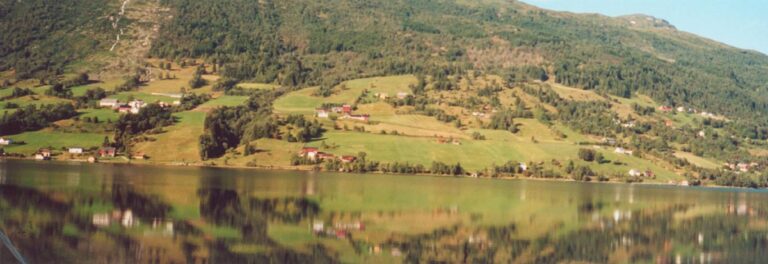
Seeing Martin, still my designated genie, reassures. Signature palm-out salute, the inherited, clipped North Dakota “Yep,” signal welcome.
At 73, the former Fjordingen editor and civic leader, prolific author with a pending book, “Stryn under the Swastika,” is trimmer, the result of a life-long running regime.
Teased about prepping for the days-away 12K Holmenkollen in Oslo, Martin says, “You should see my neighbor.”
On cue, Gudmund Skrivervik rounds the corner, brandishing poles for extra workouts uphill. A sculpted physique belying 81 years, the former teacher, now preacher, holds European records in decathlon and pentathlon. “When you have a body useful for track and field,” says Rev. Skrivervik, barely pausing, “you honor God and help others by taking care of the body.”
At Briksdal glacier, gem of Europe’s largest ice field, would-be disciples crowd the few remaining pony traps. OIav Kvame, 70, a 40-year veteran as glacier guide, walks yet another tourist-filled carriage up the steep incline, a two hour round trip. It is one of four daily during the six-month season he’ll make, despite two hip replacements.

Curiosity about the famous Stryn River prompts an invitation for coffee and pastries with Martin’s cousin Hans Böe, and his wife, Gyda, at their aerie overlooking the river.
With the panache of a seasoned raconteur, Mr. Böe, 81, highlights a 30-year career as chief gillie (fishing guide) and administrator for E.C.Monell. The New York financier once leased exclusive fishing rights along the river’s 10 mile length, as well as a bordering lodge.
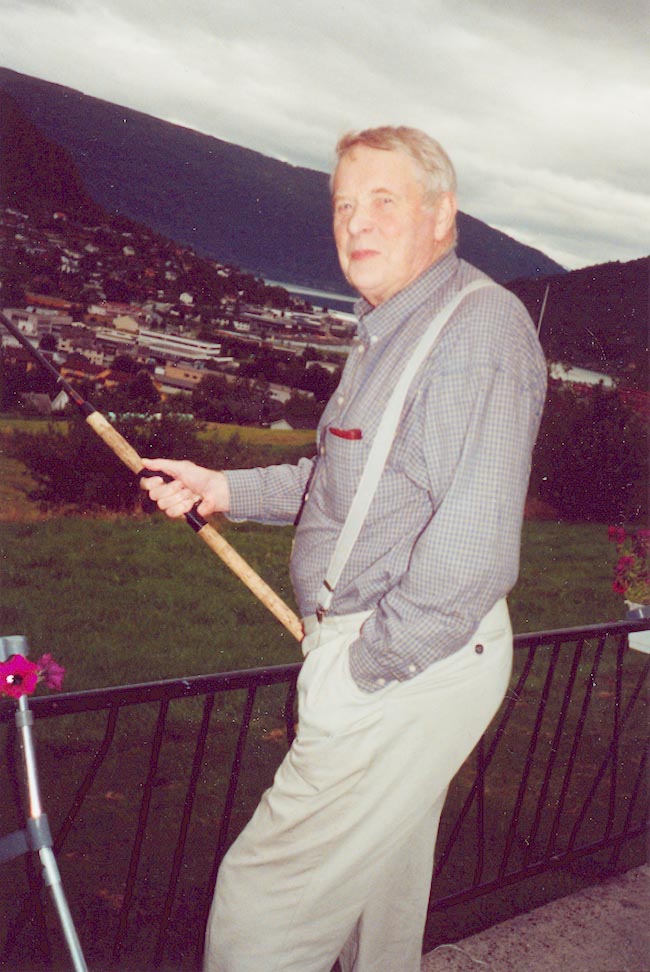
Acknowledged as mecca for discerning salmon and trout fishermen, a steady parade of pampered guests, royal and loyal, benefited from Mr. Boe’s diplomacy and unmatched professionalism as fishing guide.
Unbowed by crutches, he demonstrates the practiced rhythm of casting. A boyish grin erases years as he confides, “It is, of course, the guest who catches the fish,” dismissing his skills in priming the quarry.
An era has passed, documented by Mr. Boe on videotape, in Life magazine and photo albums piled on the coffee table. The Victorian lodge, Lysvold, is for sale, a less interesting catch-and-release program replacing the diminishing supply of salmon.
Finding a stabbur — an outdoor, elevated storage bin, a staple in ’71 that held new wool, foodstuffs, and courtship secrets—requires the resources of Kari-Ann Kaspersen, 26, a Nordfjord tourism manager.

Anxious to return to family roots, skiing and soccer, she left the Oslo fast track to live in a remodeled 1870 school house alongside parents and paternal grandparents.
Getting to the stabbur in Karl-Ann’s vintage sedan means 90 minutes jockeying rocky, switch back roads southward toward the Sandal tourist farm.
In the lush valley, Aud Bergheim and her husband renovated an abandoned family property, renting housekeeping units year-round to hikers and skiers. Mrs. Bergheim’s true passion, however, is the carefully reconstructed 17th century stabbur, now a museum of ethnic heirlooms where she serves coffee and hot cakes made to grandma’s specifications.
There she teaches painting on wood, recapturing old motifs. It is part of a scheme, explains the preservationist, to revive art forms. Hopefully other artisans—carvers weavers, knitters and potters so prevalent during my stay in 1971 will someday reappear.
More zigzags over mountains bring us to Kari-Ann’s maternal grandmother. Olaug Egge lives beside a tree-dappled hillside and lazy waterfall in the house where she raised a family, sharing a common entrance with son Anton’s newer dwelling.
Ignoring hobbling arthritis, refreshingly uncomplaining, Mrs. Egge chats easily about family and travels, smiling fondly at translator, Kari-Ann. When praised for her beautifully-crocheted dresser scarves, Mrs. Egge impulsively gives me one.
The multi-generation family presents a contented image.
We tour outbuildings with Mr. Egge and his wife, Kjellaug, and see new-foaled calves. As I wonder aloud who will eventually manage the huge, labor-intensive enterprise, a teenage son, quickly responds in English. Puffing on a cigarette, eyes downcast, he says, “We don’t know yet.”
That evening, after Malene Lilleheim’s superb dinner, 30 years slip away as we sip Martin’s expertly-bottled cabernet.
Undeterred by health problems, Malene works full time as a cashier and begins her 41st year teaching aerobics. At 63, she shares Martin’s optimism and enviable wisdom.
Talk turns to dynamics like progress and education that alter venerated patterns.
The old homestead where Martin’s widower father enchanted grandsons with North Dakota emigre tales, is now rented. Once attached to Martin’s with a corridor, it stands alone.
Mathias and Brynjar live in Oslo as executives, in sports management and telecommunications.
Martin’s running competitions and the chance to be with young granddaughters prompt frequent visits via the overnight Oslo express bus.
“We don’t push,” Malene says, showing family photos.”But the girls like to spend holidays here. And we make it nice for them.”
That ability to let go, give children space, also serves Lilleheim intimates Inger and Eivind Grov of the Alexandra Hotel in neighboring Loen.
My generous hosts in ’71, including a memorable birthday celebration, the Grovs welcome us warmly.
Graduating the prestigious Lausanne hotel school, the Grovs rebuilt their already posh hotel into today’s five-star, luxury-tourism magnet. Reminiscent of the Beau Rivage Hotel in Ouchy, Switzerland, the Alexandra has better views, as mountains, orchards, flower gardens, lake and more mountains are seen through our bedroom windows.
Three of five offspring joined the family-owned business. Son Richard, now manager, opted for the same Lausanne hotel training early on; others came later.
An aura of good will prevails, beyond the norms of commerce. Over an elegant French-inspired buffet, we talk about travel and grandchildren, About choices, responsibility, and different paths taken.
I plot our next reunion, hopefully foreshortened, greeting Martin, Malene, lnger, and Eivind in our Charleston, S.C. home.
I search for a Norsk legend to understand the significance of it all, the Nordfjord, the people, the place, my feelings.
It’s more than attitude and not a quality or value that one can package, much less export.
Perhaps Martin’s touching, parting gift offers a metaphor. A family treasure, inch tall, well-carved, wooden Viking figure presides on our mantle, poised. Left knee bent and slightly forward.
It’s commanding yet relaxed, flexible. The gaze is fixed, calm. Vigilant. Receptive. Self-knowing. Norwegian.
©2001 Nada Skerly Arnold
Nada Skerly Arnold, a 1971 Alicia Patterson Fund award winner, provided this update. Ms. Arnold, a resident of Charleston, S.C., writes about travel and the arts, and is reviving her gerontology column.

